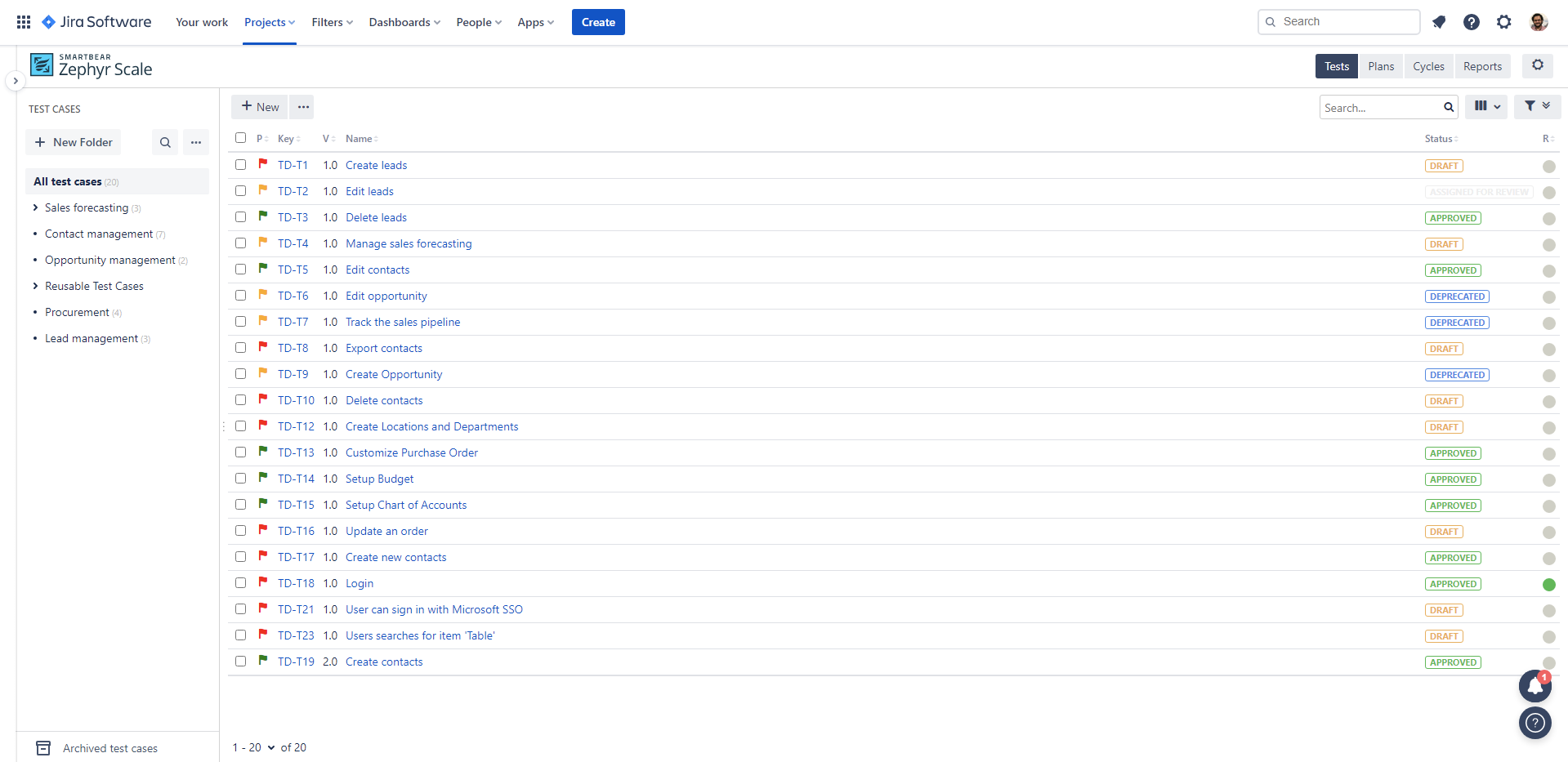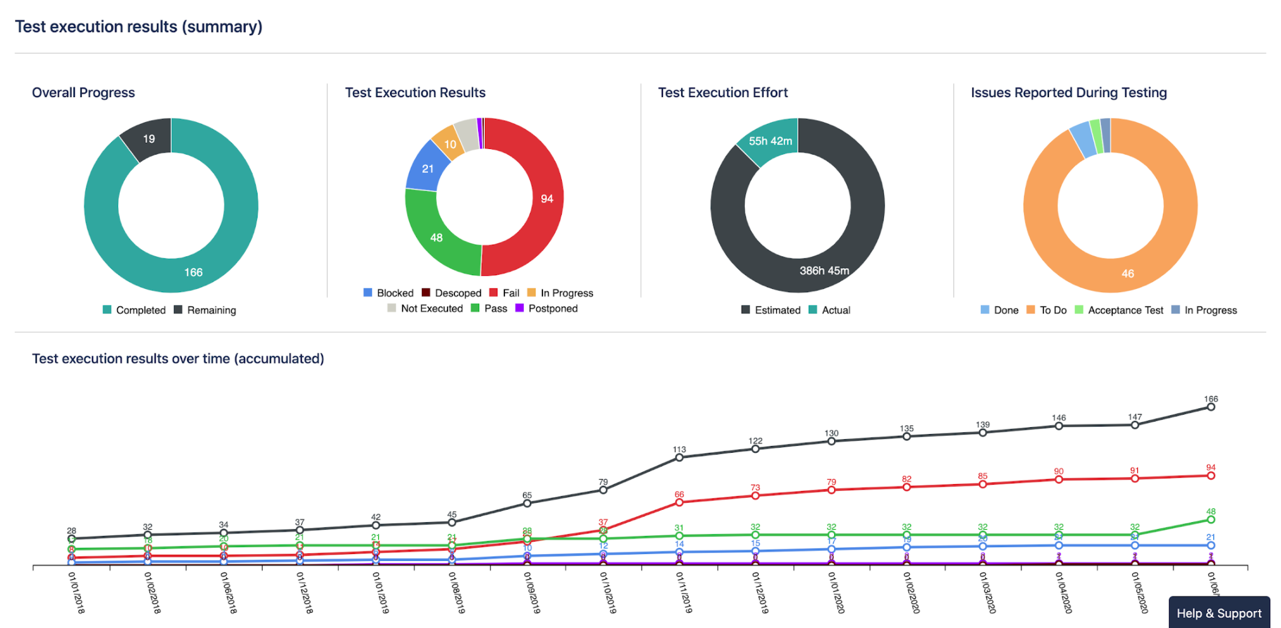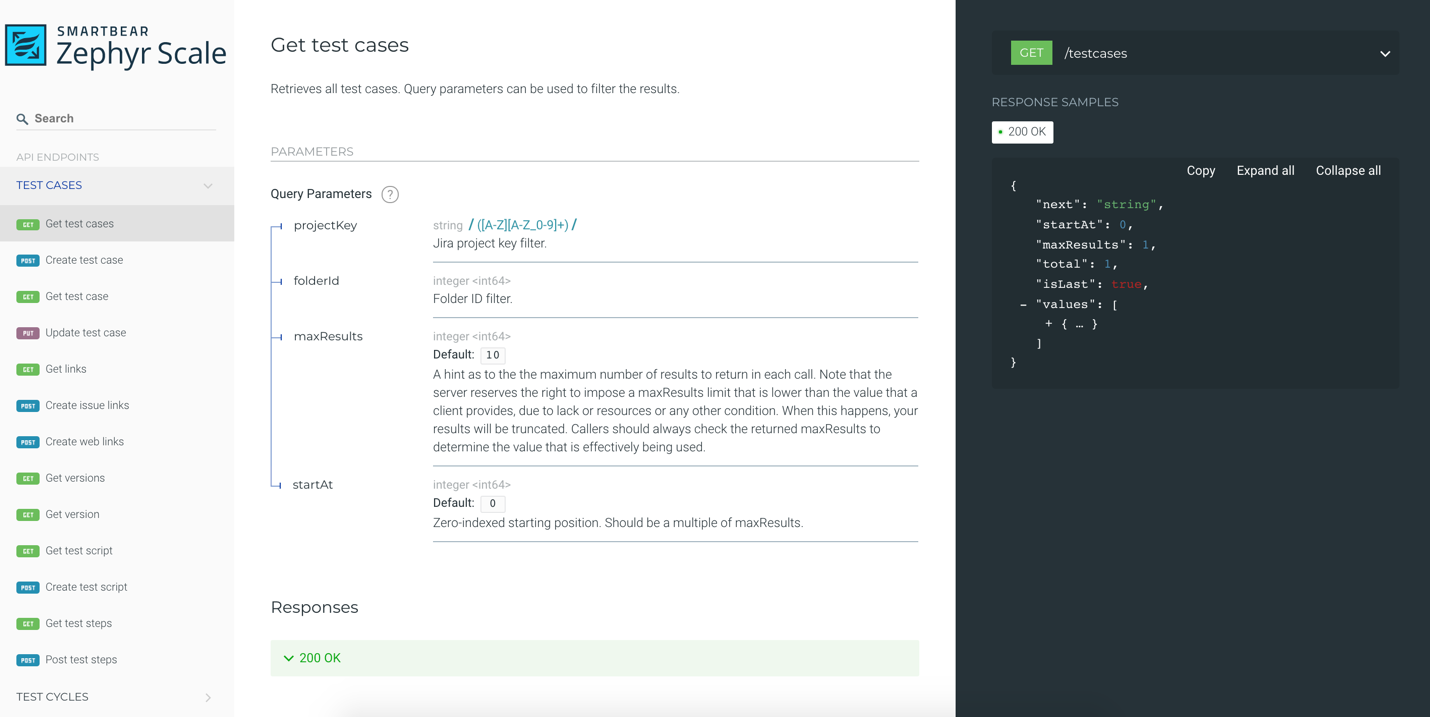With the ever-increasing demand to deploy high quality and reliable software faster, automation has become an integral part of modern software development. By seamlessly integrating your existing test automation efforts with Zephyr Scale, you can benefit from faster releases, tighter collaboration, and better visibility of your testing processes. Read on to discover why and how you can unify test management and automation in a single tool with Zephyr Scale.
Test Management Inside Jira
Zephyr Scale is our scalable, performant test management solution inside Jira. What makes Zephyr Scale stand out from similar tools is that its test entities are linked, but not directly based on the Jira issue types. This lets you easily configure your own custom fields and statuses to a greater degree at a project level, without the need to involve a Jira admin.

Main library view in Zephyr Scale
Zephyr Scale also comes with advanced reusability features, such as cross-project hierarchical test libraries, versioning, and parameters. This makes Zephyr Scale well suited for agile and waterfall teams looking to expand their testing efforts in Jira with a more structured test management solution.
Why should you automate? Three good reasons
While there may be some initial hurdles with setting up test automation with a test management tool, the return on investment will become clear quickly – and the financial benefits. Some of the benefits of using Zephyr Scale with test automation include:
- Faster and more reliable releases
Test automation lets teams spot and resolve defects early in the project's development. This is the first step in improving quality and efficiency. Once you have created automated tests, they can easily be repurposed and extended to perform tasks and test steps which are impossible through manual testing. Test automation also unlocks continuous testing throughout the release cycles, thus reducing the feedback loop and costs associated with manual testing approaches. Zephyr Scale comes with an extensive and completely free REST API that enables support for popular test automation frameworks and languages.
- Improved collaboration
Zephyr Scale is designed to bring all your testing activities in one place and break down silos between various functions such as developers, testers and analysts. By tying together integration, testing, and deployment into a single workflow, Zephyr Scale also minimizes any friction points that are inherent to these processes. With Zephyr Scale, teams can coordinate all their testing activities, including test planning, authoring, execution, and reporting in one place. Native to Jira, Zephyr Scale enables you to measure progress and quality of your product, whilst improving collaboration and visibility within both agile and traditional teams.
- End-to-end visibility
With Zephyr Scale, you can coordinate and track all your testing activities, including test automation. Once all your test results are in Zephyr Scale, you can take advantage of a large number of out-of-the-box reports and Jira dashboard gadgets. These provide complete visibility of your testing efforts for both manual and automated tests. The reports cover information about the status of the test effort, including overall software quality, test executions, and team’s progress on a given project.

Test execution summary report in Zephyr Scale
You can customize these reports to display details relevant to particular users based on the filter provided. For example, filter to display only automated or manual test executions. In addition, you can make use of a number of Zephyr Scale gadgets applied directly to the Jira dashboard. This is incredibly useful for proving daily, high-level updates to execs, stakeholders, and other teams on your progress with automated tests.
What is supported
Support for test automation tools and frameworks in Zephyr Scale mainly comes through the REST API endpoints. The REST API makes it much easier for teams to manage their test management lifecycle while supporting Agile development and DevOps methodologies. You can automate manual tests and publish the automated test-execution results to Zephyr Scale, effectively making Jira the single source of truth for all your testing initiatives.

Zephyr Scale Cloud Rest API
The following test automation tools and frameworks are currently supported with Zephyr Scale:
Continuous Integration (CI) tools
- Jenkins
- Bamboo
- Bitbucket Pipelines
- Team City
- CircleCI
- GitLab CI/CD
- Github Actions
- Other (via REST API)
Test Automation frameworks
To find out more about integrating with these frameworks, please see automation documentation. For some CI tools, such as Jenkins and Bamboo, integration with Zephyr Scale is offered out-of-the-box. This means you can publish automated test results from these tools directly to Zephyr Scale without having to use the REST API endpoints.
With the recent update to Zephyr Scale Cloud, you can make use of additional automation endpoints to seamlessly integrate with Cucumber, JUnit 4 and 5, Robot Framework, PyTest, TestNG, and NUnit. You can also leverage the JUnit endpoint to integrate with TestComplete, the leading UI automated testing tool from SmartBear, that can then generate the automation test scripts for you. By executing these test scripts, you could then produce Junit results that can be consolidated in Zephyr Scale.
How to get started
Setting up integration between your CI/ test automation tool and Zephyr Scale is simple with the REST API. To make use of the API, only two steps are required:
- Generate an access key: Each Jira user can create their own access key to access the API. The steps are very simple and easy to follow; click on your profile picture at the page bottom left, select option "Zephyr Scale API keys," and follow the instructions for automatically generating the key. A detailed, step-by-step guide can be found here.
- Making authenticated requests: Once the access key has been created, it's time to hit the API and start making some requests. There are a number of endpoints that can be used for many different actions. For example, creating test cases or test executions. A detailed, step-by-step guide can be found here.
The rise of automation
This concludes our brief look at automation integration in Zephyr Scale. Automation plays an increasingly important role in software development. Automating tests not only speeds up release frequency and development, but it also provides a welcome morale boost for testing teams. It reduces repetitive and tedious tasks, enabling them to focus on more interesting and challenging work.
Our aim with Zephyr Scale – and other test management solutions in Zephyr family – is to provide maximum flexibility to customers by integrating with the tools they already use and love. If you’re already using Zephyr Scale, and we don’t yet support your preferred tool/framework, please feel free to create a new idea in our Ideas Portal so we can consider it for future development. And if you haven’t yet checked out Zephyr Scale, why not take a 30-day free trial to see how it can help with your existing automation tools and processes?